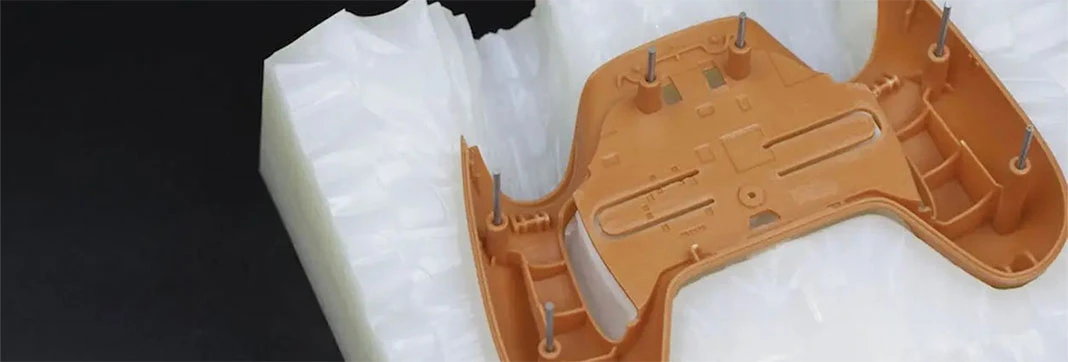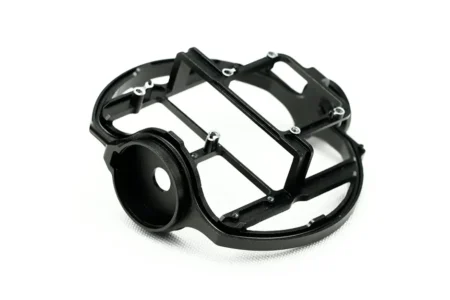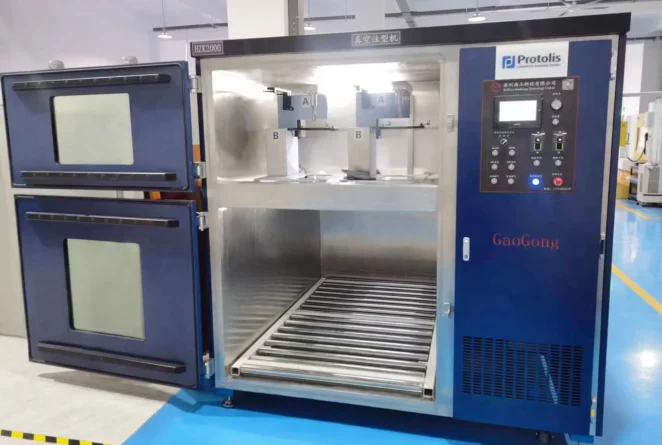Low volume manufacturing service
The benefit of on-demand production in the manufacturing process
Small batch production is an indispensable tool for many of our customers. Its main benefit is to fill the gap between prototyping production and mass production.
Reduce your time to market
Getting products to market quickly and efficiently is more important than ever. Small batch manufacturers are key partners in achieving this goal. Furthemore, with a limited number of products, it allows to gauge market reaction, refine and improve the design in a much shorter timeframe compared to traditional mass production methods.
Reduce your time to market

Optimize your cost and lead time
Our low-volume manufacturing requires less initial investment in terms of production setup (tooling) and offer better leadtime (2 to 3 times faster). Futhermore if some product adjustments are required, it’s much easier and faster to make these changes.
Optimize your cost and lead time

Bridge production to prepare for mass manufacturing
Once your project is mature, you will need to move to traditional mass production to reduce unit price. Collaborating with Protolis in the low volume stage offers critical feedback regarding production methods, material selection, and cost considerations. This partnership ensures that your concept is fine-tuned for efficient high voulme manufacturing.
Bridge production to prepare for mass manufacturing

Our low-volume production capabilities
Protolis delivers low-volume manufacturing with proven experience and in-house capabilities. As a flexible manufacturing partner for custom parts production in plastics and metals, we offer injection molding (bridge tooling and prototype tooling), CNC machining, vacuum casting, sheet metal fabrication, and extrusion. Expect short lead-time manufacturing—typically 7 to 20 days—backed by documented quality and repeatable small-batch, short-run builds. Leverage bridge production with Protolis to validate designs, de-risk your launch, and scale smoothly into mass manufacturing.
Our small-scale production technologies
Discover the main types of low-volume manufacturing that we have optimized to reach minimum order goals and keeping high quality standard.


Vacuum casting
Urethane casting is a great way to manufacture plastic parts in small serie. The process doesn’t require high investment and can replicate high plastic quality parts.
Price:
Speed:
Design flexibility:
Manufacturability*:


CNC machining
CNC machining is repeatable, scalable and easy to accomplish for quick turnarounds and high-quality goods. It can also use various raw materials while having minimal investments.
Price:
Speed:
Design flexibility:
Manufacturability*:


Rapid injection molding
Although predominantly associated with high-volume production, we have optimized our process using prototype molds to reduce initial investment.
Price:
Speed:
Design flexibility:
Manufacturability*:


Extrusion
We have optimized our process by using extrusion prototype molds to minimize initial investment, making it more cost-effective and accessible for smaller-scale projects.
Price:
Speed:
Design flexibility:
Manufacturability*:
*Manufacturability : The “Manufacturability Index” for a prototype is a concept used in product development to assess how easily a particular design can be mass manufactured
Materials for rapid prototyping
Materials for low-volume manufacturing: engineering plastics—ABS, PC/ABS, PC, PMMA, PA (GF), POM, PP, PEI (ULTEM), PEEK—and metals—aluminum 6061/7075, stainless 304/316L, carbon steel. Medical-grade and UL 94 V-0 options, plus biocompatible, UV-stable, and color-matched resins. In-stock materials ready for small-batch custom parts.
Materials for rapid prototyping

What is low-volume manufacturing?
Low-volume manufacturing, also known as small batch production, is a production methodology characterized by the creation of a limited number of units, typically ranging from a few dozen to several thousand pieces.
This approach employs hybrid techniques that blend additive and traditional manufacturing elements, effectively mitigating the overhead costs associated with tooling, labor, and materials. The result is the production of high-quality products at a reduced volume
What is low-volume manufacturing?

When is low-volume manufacturing used?
Two main scenarios where small-scale manufacturing is utilized:
Specialized, custom, and niche products
Small-batch production is particularly well-suited for high-mix low-volume (HMLV) markets, such as those involving specialized, niche, or custom products. Low-volume production techniques offer the flexibility and customization needed to meet these specific demands.
Bridge between prototyping and full-scale production
Low-volume production serves as a pivotal bridge between product development/prototyping and large-scale production. This approach minimizes risk by enabling a concept to be tested and market validation before committing to full-scale production, ensuring a smoother transition.
When is low-volume manufacturing used?
Craft your parts as you imagine


Craft your parts as you imagine
That’s where we lend our expertise. Together, we’ll explore and determine the ideal manufacturing methods, materials, and finishes to actualize your vision. To gain further insight, you can explore our range of available materials and finishes detailed below.
Optimize your supply chain


Optimize your supply chain
Our expertise in small scale manufacturing offers a significant benefit for your project. For your small serie of parts, we provide an unique on-demand manufacturing service. To optimized leadtime and price, find more information inside our guide.
Example of our low-volume work

Materials: Metal
Reference: 2017A
Technologies: CNC Machining
Industries: Medical
Finishes: Anodizing, Fitting & assembly

Materials: Metal
Reference: 6060 T6
Technologies: CNC Machining
Industries: Aerospace & aviation
Finishes: Sand blasting & bead blasting

Materials: Metal
Reference: 6061 T6
Technologies: CNC Machining
Industries: Industrial
Finishes: Technical polishing

Materials: Metal
Reference: 6061 T6
Technologies: CNC Machining
Industries: Automotive
Finishes: Technical polishing

Materials: Metal
Reference: 6061 T6
Technologies: CNC Machining
Industries: Agricultural
Finishes: Technical polishing

Materials: Metal
Reference: 6061 T6
Technologies: CNC Machining
Industries: Consumer goods
Finishes: Anodizing, Sand blasting & bead blasting
Our advantages
 Design optimisation (DFM) and technical support
Design optimisation (DFM) and technical support 200+ of plastic and metal material available
200+ of plastic and metal material available 10+ finishes
10+ finishes Cost-effective
Cost-effective Quickturn around
Quickturn around
Our advantages
We are manufacturing committed
Inside the low volume manufacturing in the digital era, there’s a constant competition to deliver the fastest service at the most affordable prices. Regrettably, this rush often leads to a reduction in support and service quality. However, at Protolis, we have adopted a distinct approach.
Committed to service
Customer projects remain at the center of our vision. We take time to work alongside our customers and provide support and advice at each stage of the project.
Committed to quality
Whether it’s for a single part or a sub-assembly composed of different materials and technologies, we control all components for a perfect fit and high-quality product.
Committed to success
Your satisfaction is our top priority. There’s nothing more motivating for us than hearing our customers are pleased with the parts they receive.
FAQ about low-volume production
What is the difference between high and low volume production?
The main difference between high volume and low volume production is abviously the quantity of products that are manufactured. There is no exact number to define the limit. It will mainly depend on the technology used to produce. At Protolis, we usually define low volume with a starting quantity of 100 up to 1000 units.
The aim behind this type of production is different. High volume production or also called mass production involves producing a large number of products in a short time.The manufacturing process is often highly automated and optimised for efficiency, with a focus on minimising production costs and maximising output. In contrast, low volume production involves producing a smaller number of products. The manufacturing process is often more flexible and adaptable to changes in design or production requirements if needed.
What are the limits of low volume production?
With low-volume production, economies of scale cannot be achieved, which can result in a higher unit cost compared to conventional methods, although the initial investment cost remains lower. Additionally, some applications may not be feasible with the original material, so it is necessary to find a similar material available for low-volume production methods. Finally, low volumes may attract little interest from manufacturing companies, but this is precisely our niche. Contact us
What is High-mix low-volume (HMLV) manufacturing?
High-Mix Low-Volume (HMLV) manufacturing is a production approach where a diverse range of products (high mix) are created in small quantities (low volume). This method is commonly used for specialized, custom, or niche products that require flexibility and frequent design changes. HMLV manufacturing allows companies to adapt quickly to customer demands, making it ideal for industries like aerospace, medical devices, and automotive parts. The main advantage is the ability to produce tailored products without committing to large-scale production, reducing waste and inventory costs. However, it can involve higher per-unit costs and complex production planning. Despite these challenges, HMLV manufacturing is essential for companies that need to balance customization, flexibility, and rapid market responsiveness.




